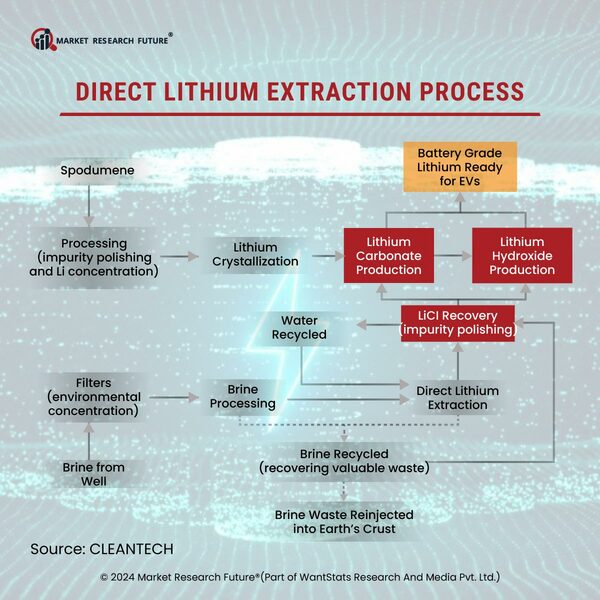Lithium Extraction to Become More Environment Friendly in 2024 With DLE Process
Lithium extraction is a big question to meet the requirement of the metal in different sectors of production, mainly in battery production. Since, battery production leads to harmful effects in the environment, another method called Direct Lithium Extraction (DLE) has come out as a solution in 2024
The conventional methods of lithium extraction and purification methods are no longer in usage as they prove to be more costly and harmful to the environment. Since, the production of batteries is increasing day by day in the light of clean energy transition, the demand of lithium is expected to grow even more. Lithium demand and battery production are interdependent, since usage of batteries is required for electrification in different sectors, such as electric vehicles, power grids, wind turbines, and others. Therefore, increase in battery production will lead to growing number of demand for lithium by 1.42 million metric tons by the end of 2030.DLE or direct lithium extraction will lead to 300 percent lithium per ion than other extraction processes as of now. The process involves solvent extraction, membranes, and others that help in the extraction of lithium directly from the source and refining it. The technology developed by DLE is known as LiTASTM that helps to meet the demand of lithium extraction along with refining lithium directly from brine at lowest cost price possible. It helps to meet the lithium demand for batteries production, as clean energy transition will focus more on the electrification. Hence, the need of batteries will increase leading to robust demand of lithium by 2030. With the new method, DLE, it is easier to reduce the emissions from lithium at the same time creating a balance with required amount of lithium production to meet the growing energy demands by 2050. The electric vehicles are expected to increase in production in 2024 for the sake of green energy transition causing lithium demand to increase that can be well compensated with the new direct lithium extraction (DLE) process of 2024.

